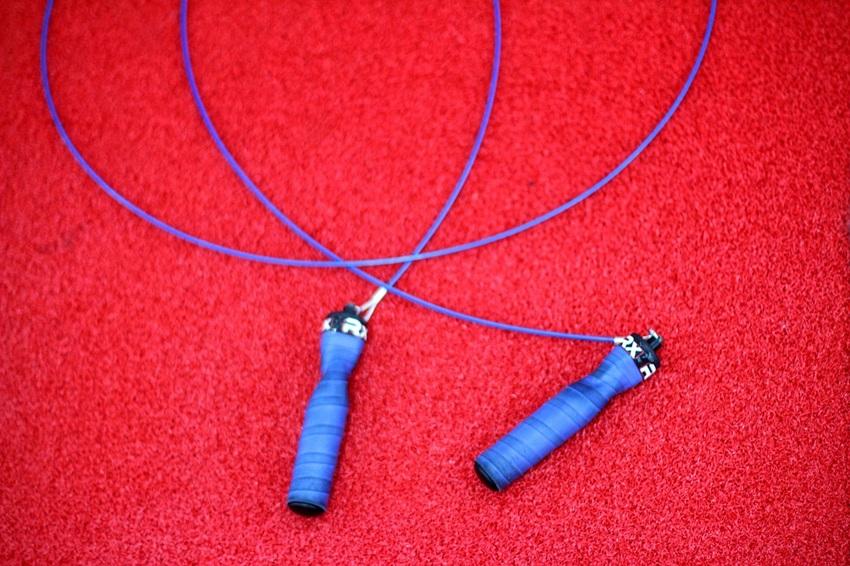Does the Skipping Rope Really Help in Losing Weight?
Last Updated on – June 24, 2025 by Robert Dowling
Weight loss is the one that everyone desires, and no one knows any limits on how to get it. One of the good, easy exercises that do not always come to mind is rope skipping, but it is a wonderful way to have fun, get into it, and exercise like crazy. Skipping rope is a wonderful calorie-masking and overall fitness-building activity. In contrast to other exercises that need costly machinery or a membership at a health club, jumping rope is economical and convenient. Is it indeed an excellent exercise for weight reduction? Let’s discover the advantages and efficacy of the exercise.
How Skipping Rope Helps in Weight Loss

Skipping rope is an exercise of the entire body that engages the legs, core, and arms. Skipping rope is calorie-sucking, and the body loses calories performing the action. Calories burned are intensity, time, and weight-dependent. Since skipping rope is a high-intensity exercise, it raises heart rate rapidly and maintains it at a high level, thereby burning fat. This type of exercise is called cardiovascular exercise, which is rather necessary if one wants to reduce weight.
Calories Burned During Skipping Rope
Skip rope calories burned differ between individuals. Certainly, it is one of the best workouts that can burn calories. One can burn calories in high amounts within a short time, making it among the best workout regimes for the time-challenged. One can burn more calories if they move faster and exert more. Compared to walking or cycling, skipping is one fast calorie-burner and hence an ideal workout for shedding pounds.
Skipping Rope and Fat Loss
Weight loss is achieved when the body expends more calories than it takes. Skipping rope causes this calorie shortage through augmented energy expenditure. It is an intense exercise which causes fat burning, particularly in the abdominal, thigh, and arm areas. Through constant practice of skipping rope in addition to an equitable diet, an appreciable loss of fat can be acquired in the long run. Also, this exercise boosts metabolism, which is of the highest importance when it comes to keeping a fit weight.
See Also: Connection Between Crunches and Belly Fat Reduction
Improves Cardiovascular Health
Rope skipping helps not only to lose fat, but also to improve cardiovascular function. It increases heart rate and thereby develops endurance, both for the heart and lungs. With a healthy cardiovascular system, oxygen is then supplied to muscle tissues in the best manner possible for increased workout potential. Skipping regularly decreases the chances of heart diseases while improving overall fitness. Jumping rope training increases endurance in people and helps to experience less fatigue in an exercise at any time.
Muscle Toning and Strength Building
Weight loss isn’t just losing fat; it is also strengthening and firming. The skipped rope activates all the muscles, including the calves, thighs, glutes, and core. Over time, those become stronger and more developed. This thus results in desirable body composition being fit and lean. In coordination with balance in skipping, the joints are stabilized, and the ligaments are tightened in good time. The stronger the muscles, the more calories they will burn when one is resting, thus maintaining their weight in the long run.
Enhances Coordination and Agility
Jumping rope is more a coordination of hands and feet than going up and down. Regular practice develops balance, agility, and quickness. Typically, athletes use skipping as part of their training for enhancing footwork and reaction time. For fitness enthusiasts with a focus on shedding pounds, coordination provides the means for making workouts more effective and enjoyable. It also decreases the likelihood of sustainment of injuries through greater body control and efficient movement patterns.
See Also: Useful Facts Related to Unwanted Weight Loss In Diabetes
Easy to Include in Any Routine
One of the advantages of skipping rope is that it can be utilized anywhere. As opposed to other exercise routines that require special equipment or a great deal of space, skipping rope requires almost no equipment and almost any space will do. It can be performed in the morning, during lunch, or in the evening. Individuals with very busy lives can take advantage of brief but potent skipping routines. Even skipping for a few minutes can be good if done every day. It is also a great warm-up exercise before indulging in other exercises.
Skipping Rope Vs other Cardio Exercises
The usual question asked by most is, is skipping better than the other cardio training programs, such as running, cycling, or swimming? Every exercise may be valuable in its own right, but skipping stands apart for being such an intense and effective workout. Running requires a lot of space and is rough on your joints, while cycling needs a bike and equipment. Swimming is great in terms of working the entire body; however, it works only if you have access to a swimming pool. Skip toting rope, however, involves little equipment and may be performed virtually anywhere. It is also simpler to regulate intensity, so it is ideal for any level of fitness.
Best Practices for Effective Skipping Workouts
In order to get the most out of skipping rope, correct techniques need to be maintained. Newcomers should begin slowly and progress to high speed and intensity gradually. Maintaining posture with an upright position and core engagement improves posture and saves against injuries. Ensure that you pick shoes with good cushion, which would absorb the shock at the joints. Additionally, keep yourself hydrated and rest whenever required. In that regard, certain hops like the single bounce, alternating foot jump, and crossing jump do honestly make for really great selections when one wishes for something meaningful from a workout.
See Also: Does Buttermilk Help in Weight Loss? Exploring Real Facts
Combining Skipping Rope with Other Exercises
Going a step further would be going beyond rope skipping. It’s a method of shedding weight quite effectively, but it works well when supplemented by other forms of exercise. Usually, strength training, yoga, and stretching exercises help in improving the overall toxicity and agility of skipping workouts. You can do your skipping on a particular day, intermittently switching it up with some body weight exercises, such as squats, lunges, push-ups, and so on; this can be an amazing fitness program because it prevents workout blandness and keeps the challenge flowing to the body. It really covers the bases of using skipping rope and balancing it with healthy, sustainable weight loss and overall well-being.
Common Mistakes to Avoid
To maximize the benefits of skipping rope, however, several mistakes must be avoided. Using the incorrect length of rope is one of these mistakes, and makes movement quite uncomfortable. A very long or too short rope impairs performance and poses the danger of tripping. Landing harshly on the feet is also a mistake because it causes tension on the joints. Good technique requires landing on the balls of the feet to alleviate impact. Skipping too quickly without good control can cause fatigue and injury as well. Allowing adequate time for building endurance and emphasizing form prevents these problems.
Well, sometimes people don’t warm up before skipping; so they’re risking a muscle strain. A little warm up, say stretching or jumping jacks, warms the body for movement and injury prevention. Skipping for long without resting is also tiring and reduces the effectiveness of workouts. Be all ears, take a break in due time when the body says it needs it, lest he or she might be guilty of over-training.
Who can benefit from Skipping Rope?
Skipping rope suits most people, fit or not. Newbies can start short and slow, but the serious players can get intense and long. Skipping rope is one of the best physical training routine for anybody who wants to achieve weight loss, cardiovascular efficiency, or physical fitness. Those with joint issues or any health condition, though, must consult a doctor first before proceeding. Since skipping rope is an impact sport, one must exercise caution to prevent injuries.
Skipping brings a lot of excitement for children and youth, but it is also an activity that supports physical growth and development. In this regard, it increases bone density, motor skills, and general physical conditioning. It also serves as a great substitute for screen time where children are taught to engage in physical activity that is rewarding and enjoyable.
Conclusion
In the realm of weight loss and general conditioning, skipping rope is one of the most valuable exercises. It burns calories, conditions the heart, tones the muscles, and develops coordination. Jumping rope is low on the pocket, and it takes no space so its benefits far exceed those of other heavy-duty and expensive exercises. Correct technique and frequent use can produce significant weight loss and fitness gains. Of course, with proper nutrition and extra exercises, success will end up in the long term. From being beginner to advanced fitness enthusiast, jump ropes are fun and enjoyable ways of keeping fit.
The stress-relieving, invigorating workout of jumping rope enhances mental health. Cyclical motion on the mind makes rope skipping relieving, with such being why un-stressing proves excellent with jumping rope. In addition, skipping rope increases will power, toughness, and will power, with this potentially applicable anywhere in one’s life. Whether used for wellness, weight loss, or athletic fitness, the simple act of jumping rope is an effective and efficient exercise that has many positive effects on body and mind alike, and is a great addition to any exercise regimen.






